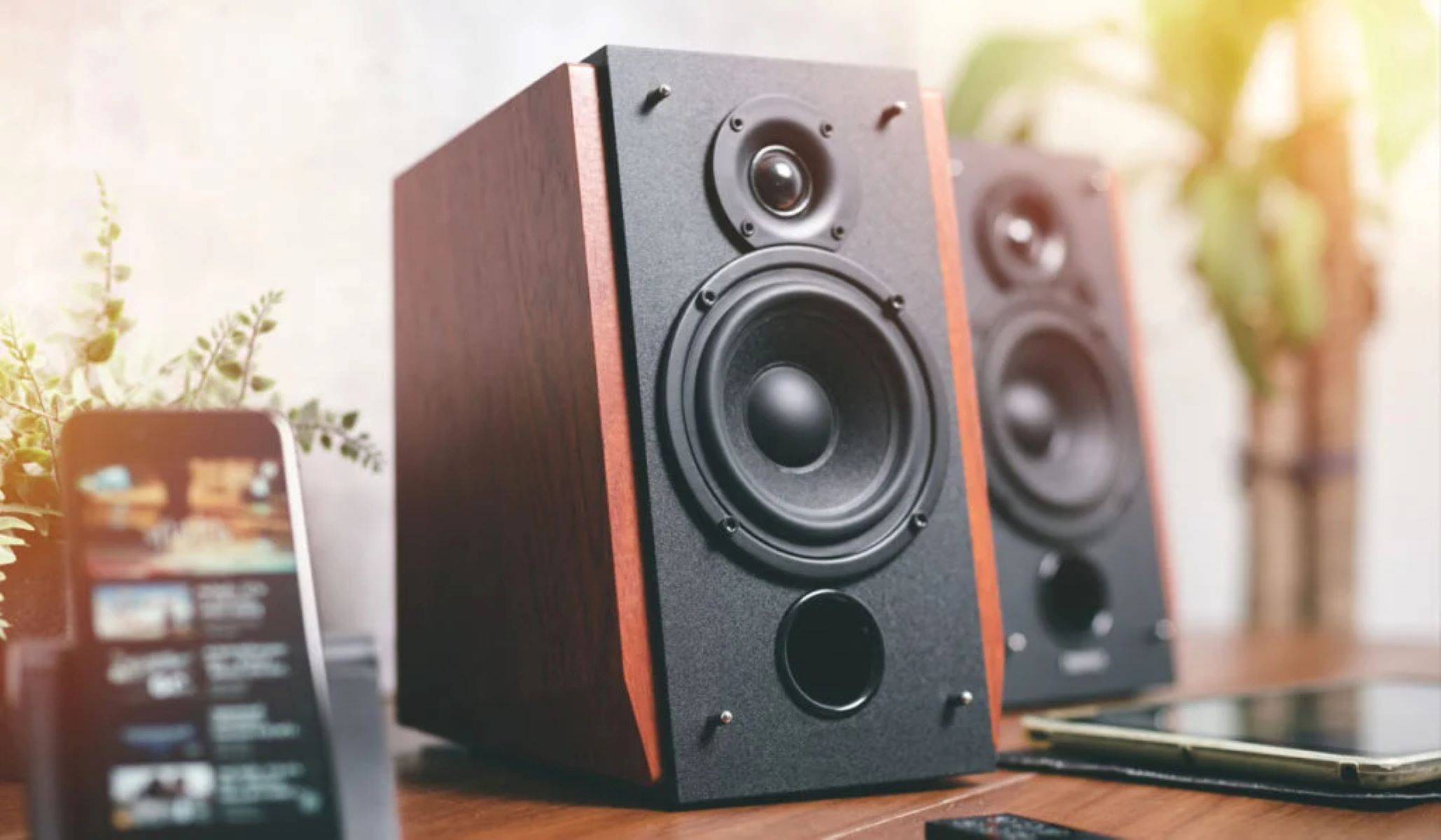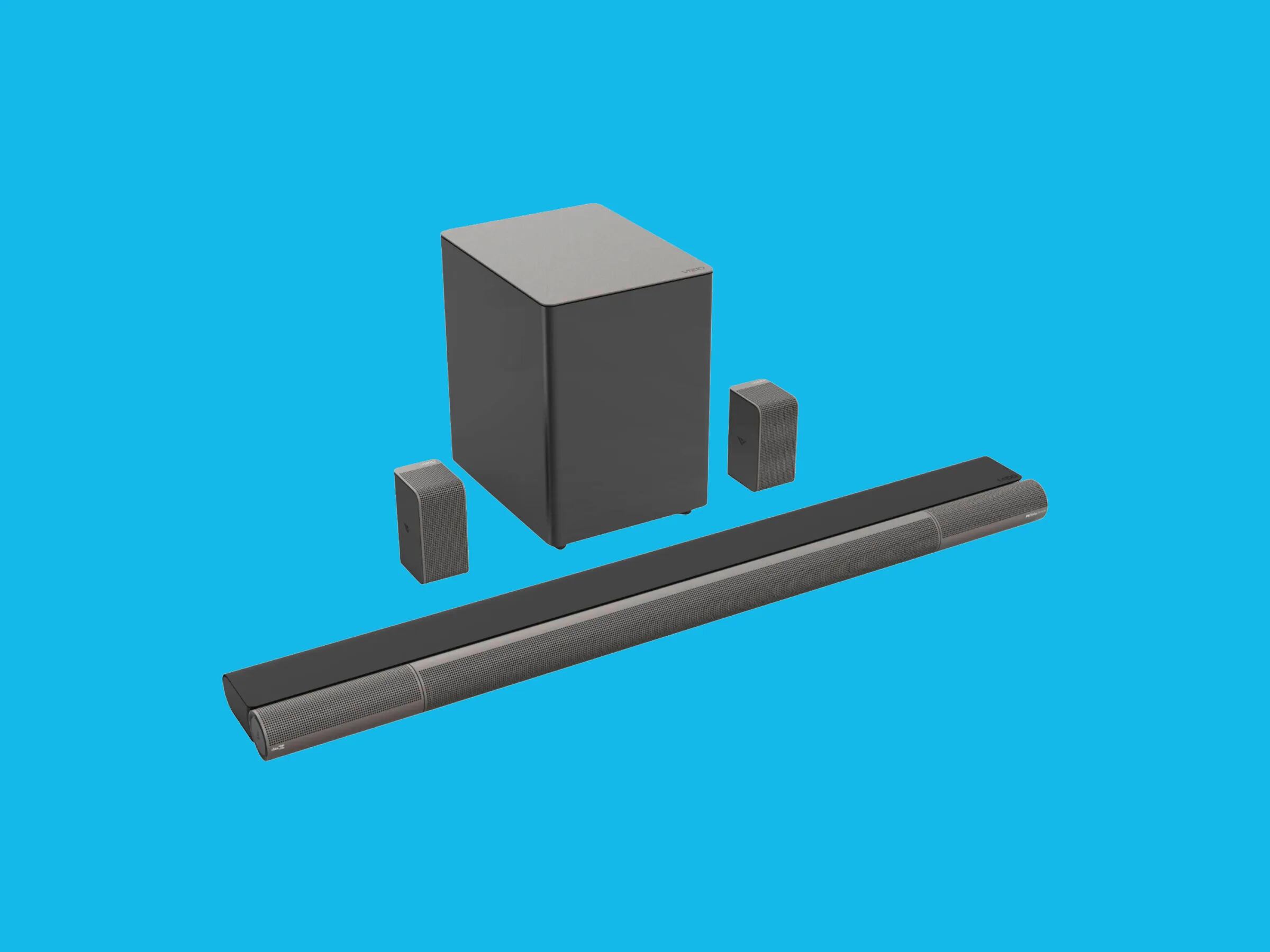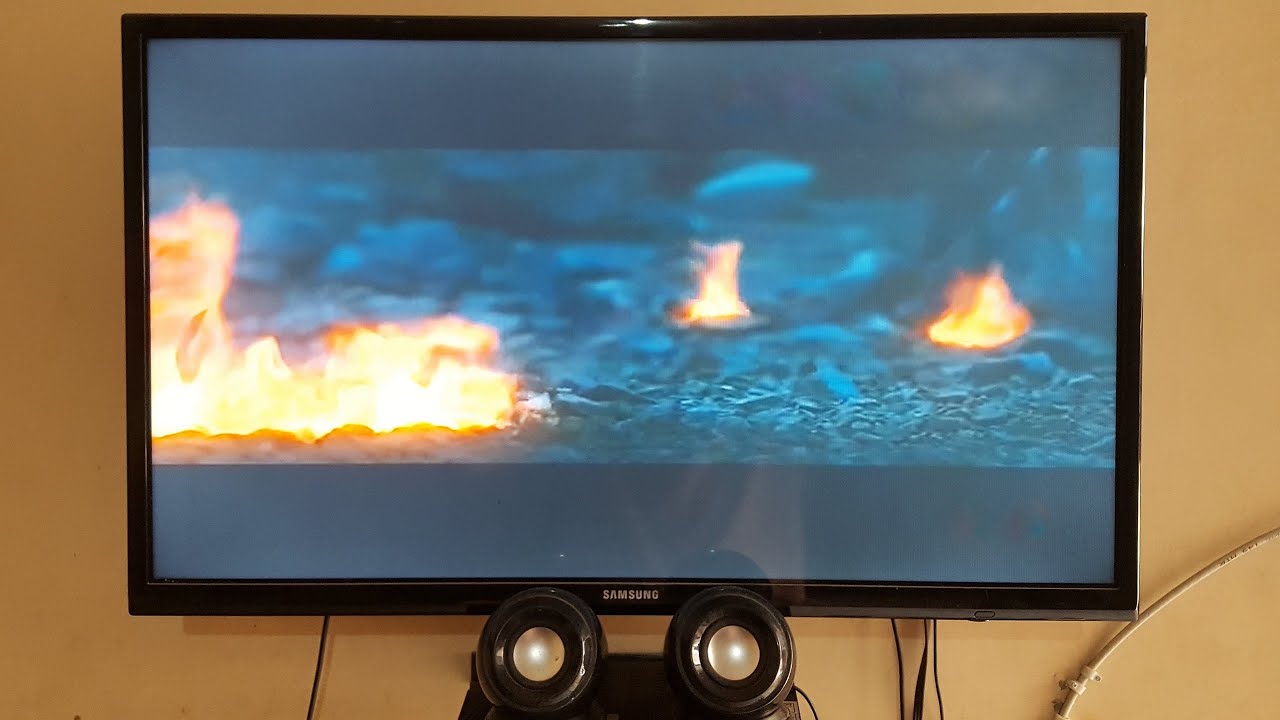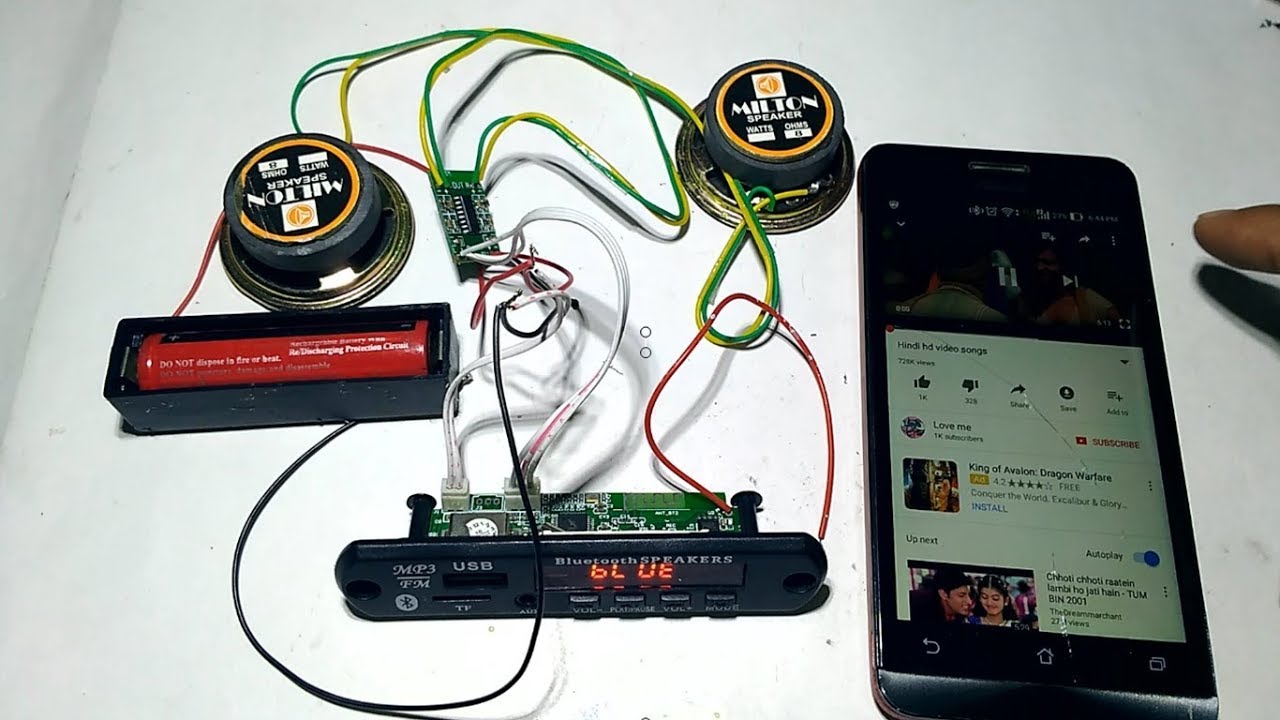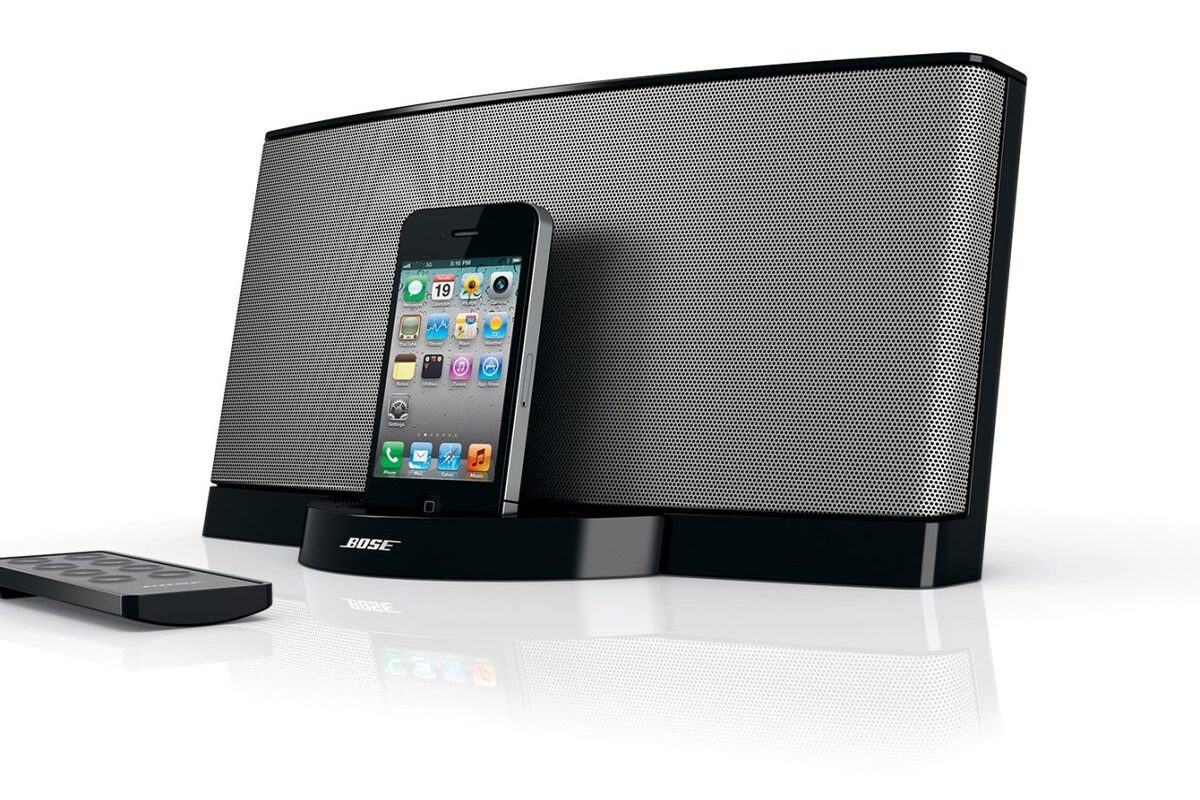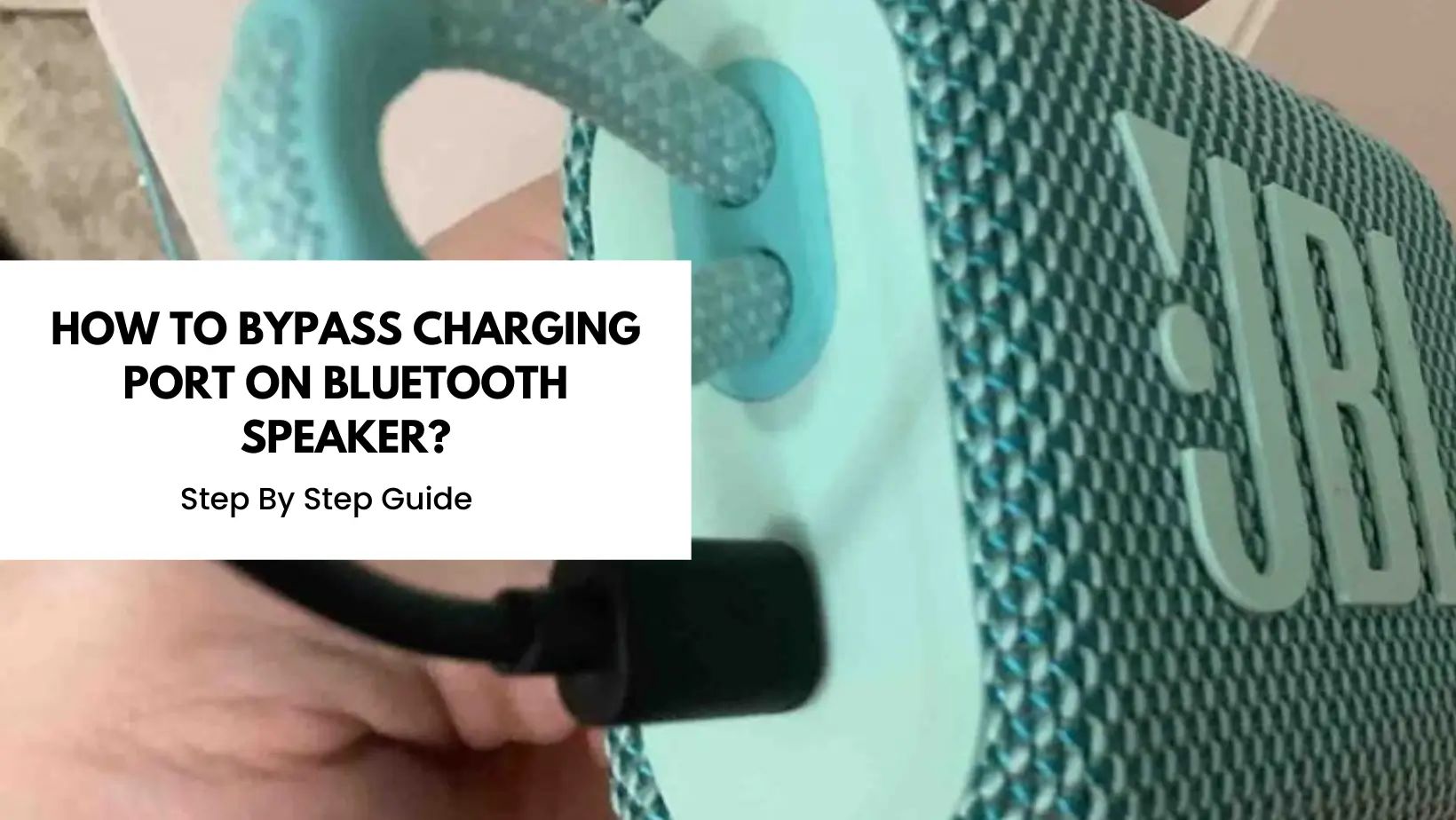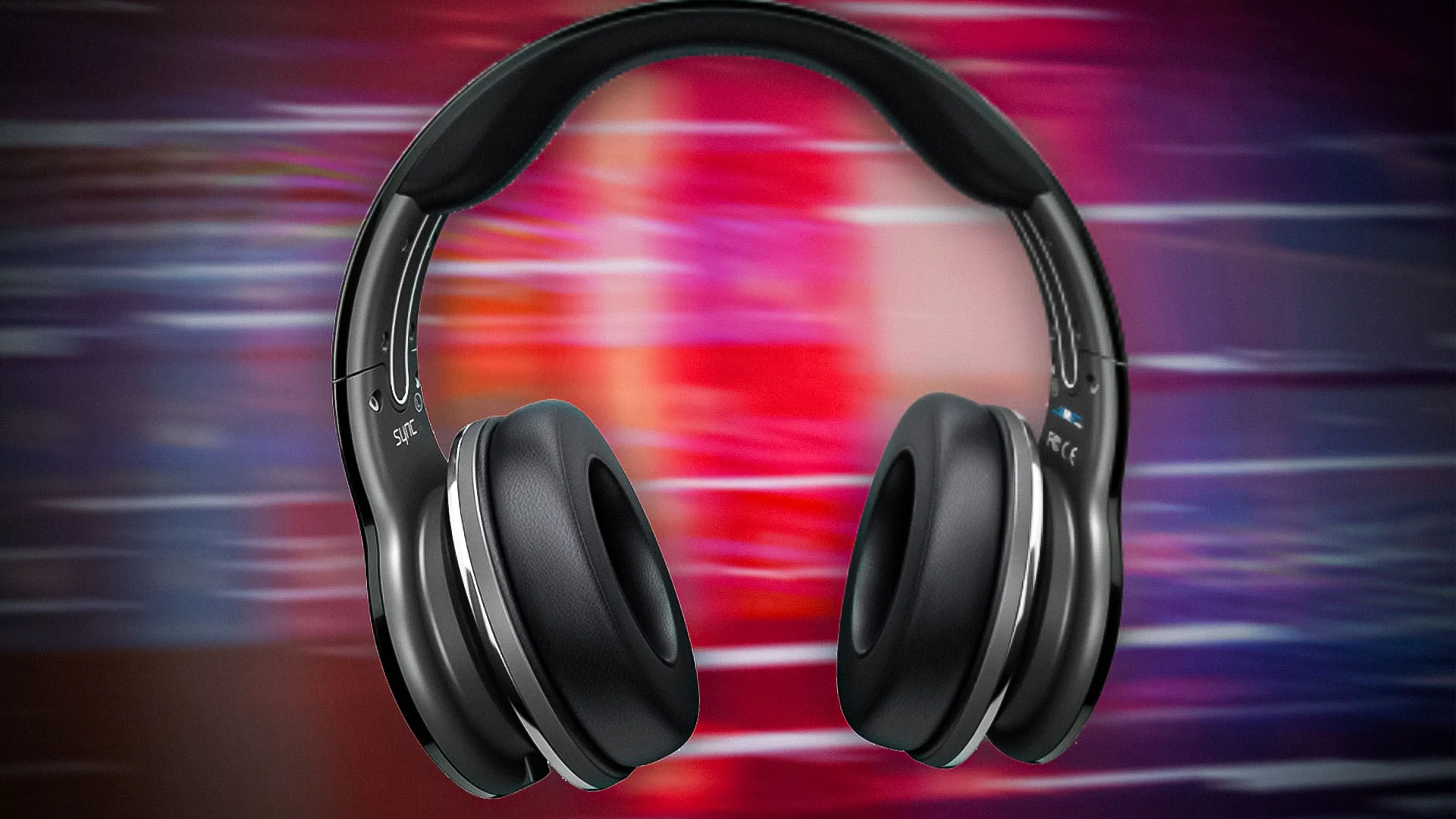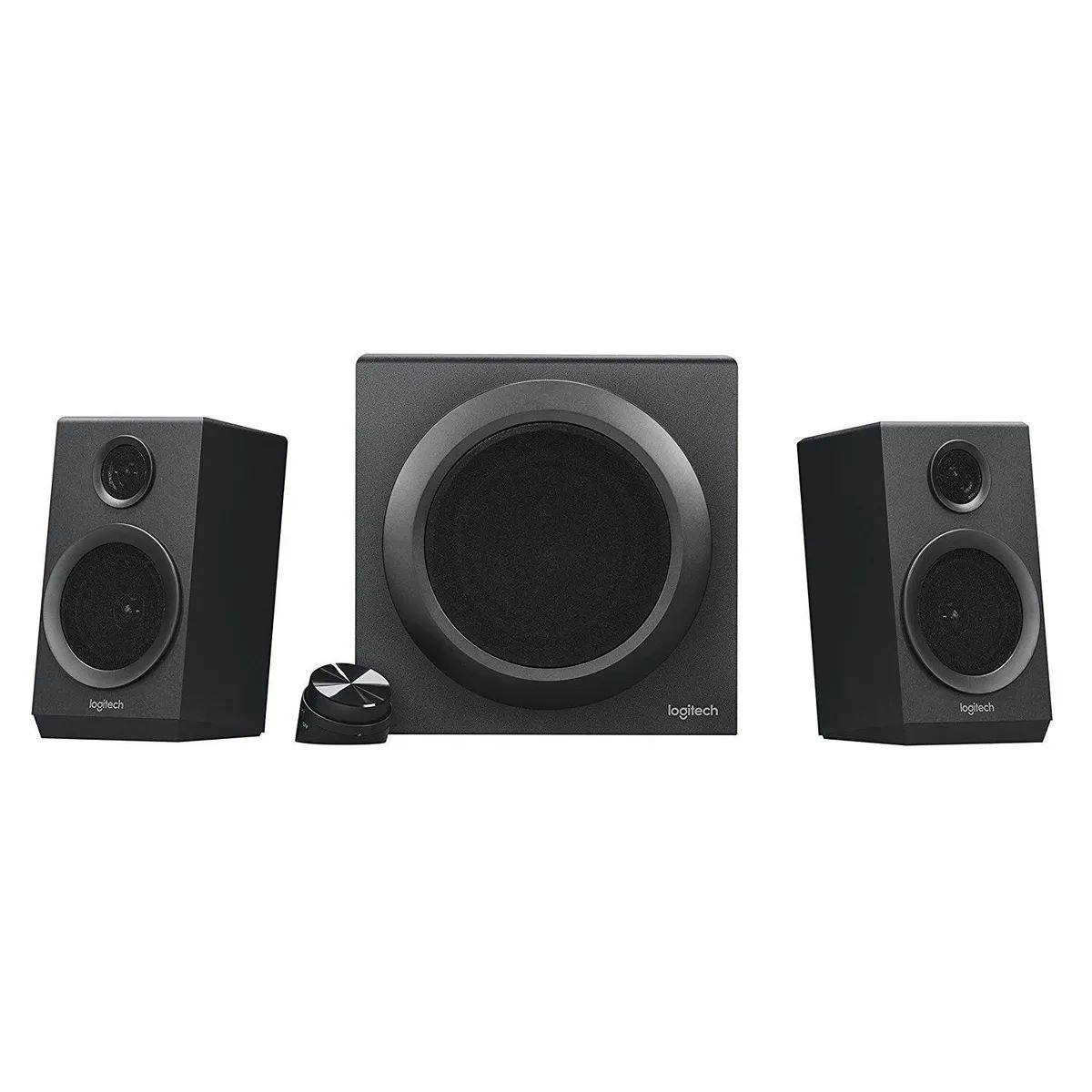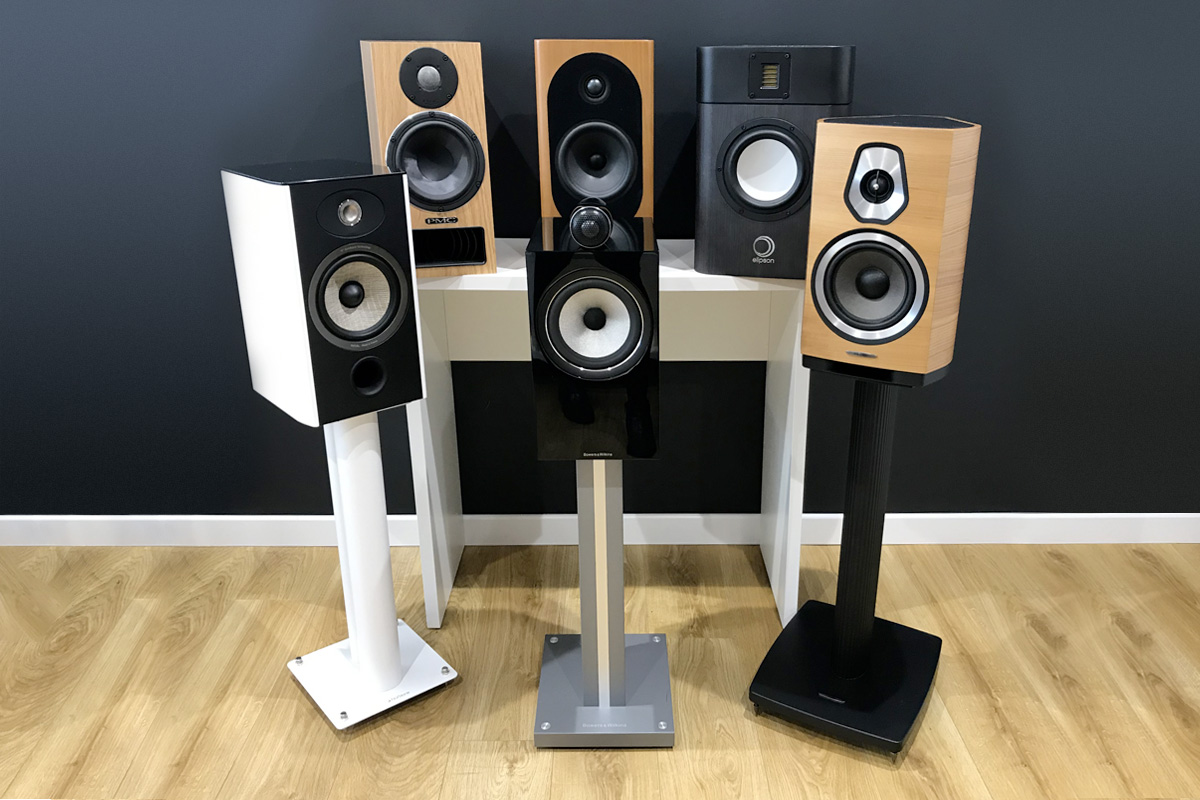Introduction
Welcome to the world of seamless music streaming! If you’re tired of dealing with tangled wires and restrictions of your wired speakers, then you’ve come to the right place. In this article, we will explore how to transform your wired speakers into wireless ones, giving you the freedom to enjoy your favorite tunes without the hassle of cables.
Wired speakers have been a popular audio solution for decades. They offer superior sound quality and can be found in homes, offices, and entertainment venues around the world. However, as technology continues to evolve, so does our desire for convenience and flexibility. That’s where wireless speaker conversion kits come into play.
By converting your wired speakers into wireless ones, you’ll experience a whole new level of convenience. You’ll no longer be tethered by cables, allowing you to place your speakers wherever you want in your home or office. Whether it’s in your living room, kitchen, or even outdoors, wireless speakers give you the flexibility to enjoy high-quality audio without compromising on style or functionality.
One of the easiest and most effective ways to make your wired speakers wireless is by using a wireless speaker conversion kit. These kits typically consist of a wireless audio receiver and a transmitter. The receiver connects to your existing wired speakers, while the transmitter links wirelessly to your audio source, such as a smartphone, tablet, or computer.
Connecting the wireless adapter to your wired speakers is a simple process that requires minimal technical knowledge. Once the receiver and transmitter are connected, you can easily pair them to establish a wireless connection. This allows you to stream your favorite music, podcasts, or even watch movies with clear and crisp sound, all without the hassle of wires.
If you’re worried about compatibility or technical issues, worry not! Most wireless speaker conversion kits are designed to be user-friendly and work with a wide range of audio devices. They often support multiple connectivity options, including Bluetooth, Wi-Fi, and even auxiliary cables.
In this article, we will guide you through the step-by-step process of converting your wired speakers into wireless ones using a wireless speaker conversion kit. We will also provide tips and troubleshooting techniques to ensure a seamless and enjoyable audio experience. So, let’s dive in and unlock the world of wireless music streaming!
Understanding Wired Speakers
Before we dive into the world of wireless speaker conversion, it’s essential to have a basic understanding of how wired speakers work. Wired speakers, also known as passive speakers, rely on a physical connection to an audio source via a cable.
At the heart of a wired speaker is a driver, which produces sound by vibrating a diaphragm. The vibration is generated in response to electrical signals sent from an audio amplifier or receiver. These electrical signals are transmitted through speaker wires to the speaker’s voice coil, which then moves the diaphragm, creating sound waves.
Wired speakers come in various shapes, sizes, and configurations, including bookshelf speakers, floor-standing speakers, and in-wall/in-ceiling speakers. They are capable of delivering powerful and accurate sound reproduction, making them a popular choice for audiophiles and music enthusiasts.
When it comes to connecting wired speakers, it’s important to understand the different types of connections available. The most common connection type is the speaker wire connection, which involves attaching bare wire ends to the speaker’s binding posts. This connection provides a secure and reliable electrical connection.
Another common wired speaker connection is the RCA connection, which uses RCA cables to transmit audio signals. RCA connections are often found in home theater setups and multimedia systems, providing a simple and straightforward way to connect speakers to audio receivers or amplifiers.
Additionally, wired speakers may also have other connection options, such as XLR, 3.5mm audio jack, or even USB, depending on the speaker’s design and intended use.
One important advantage of wired speakers is their ability to deliver consistent audio quality. Since they rely on a direct physical connection to the audio source, there is no loss of signal or interference that can occur with wireless transmission. This ensures that the sound delivered by wired speakers is faithful to the original audio source.
However, the drawback of wired speakers lies in their limited placement options. Since they require a physical connection, you are limited to placing them near the audio source or using long speaker cables to extend the reach. This can be inconvenient, especially in situations where you want to have speakers in multiple rooms or locations.
Now that we have a good understanding of wired speakers and their limitations, let’s explore how we can break free from the constraints of cables by converting them into wireless speakers.
Wireless Speaker Conversion Kit
If you’re eager to make your wired speakers wireless, a wireless speaker conversion kit is the perfect solution. These kits are designed to transform your existing wired speakers into wireless ones, giving you the freedom to enjoy your favorite music without the limitations of cables.
A wireless speaker conversion kit typically consists of two main components: a wireless audio receiver and a transmitter. The receiver is connected to your wired speakers, while the transmitter is responsible for wirelessly transmitting audio signals from your audio source to the receiver.
When choosing a wireless speaker conversion kit, there are a few factors to consider. First, ensure that the kit supports the type of connection your wired speakers use. Most kits provide speaker wire connections, RCA connections, or both, allowing you to connect to a wide range of speaker configurations.
Second, check the transmission range of the kit. The transmission range determines how far the audio signal can travel wirelessly from the transmitter to the receiver. It’s important to select a kit with a range that suits your needs, taking into account the distance between your audio source and the desired placement of your wireless speakers.
Wireless speaker conversion kits often provide multiple connectivity options. The most common option is Bluetooth, which allows you to connect your audio source wirelessly to the transmitter. Bluetooth is widely supported by smartphones, tablets, and computers, making it a convenient choice for most users.
Some kits also offer Wi-Fi connectivity, enabling you to connect your audio source and transmitter to your home Wi-Fi network. This provides a more stable and reliable connection, especially in situations where you have multiple wireless speakers or want to stream audio from different sources simultaneously.
In addition to Bluetooth and Wi-Fi, some wireless speaker conversion kits may have auxiliary inputs, allowing you to connect audio sources directly via a 3.5mm audio jack. This is useful for devices that may not support Bluetooth or Wi-Fi connectivity.
Setting up a wireless speaker conversion kit is straightforward and typically requires minimal technical knowledge. First, connect the wireless audio receiver to your wired speakers using the provided speaker wire or RCA cables. Ensure that the connections are secure and properly seated.
Next, connect the wireless transmitter to your audio source using the appropriate connection method, whether it’s Bluetooth pairing, Wi-Fi setup, or auxiliary cable connection. Follow the manufacturer’s instructions to establish the wireless connection between the transmitter and receiver.
Once the wireless connection is established, you’re ready to enjoy the freedom of wireless audio streaming. You can now play your favorite music, podcasts, or even watch movies with the convenience of placing your wireless speakers wherever you desire.
Overall, a wireless speaker conversion kit is a fantastic solution for those looking to upgrade their wired speakers to wireless functionality. It provides flexibility, convenience, and the opportunity to transform your audio setup into a seamless and wire-free experience.
Connecting the Wireless Adapter
Once you have your wireless speaker conversion kit in hand, it’s time to connect the wireless adapter to your wired speakers. This process is straightforward and typically requires minimal technical knowledge. Let’s walk through the steps to ensure a seamless setup.
1. Start by identifying the audio inputs on your wired speakers. Depending on the speaker’s design, you may have binding posts, RCA inputs, or other connection options. Take note of the type of connection your speakers require.
2. Next, locate the wireless audio receiver that came with your conversion kit. It is usually a small box or device with audio output connectors. You may need to refer to the user manual provided with the kit to identify the correct receiver.
3. Connect the receiver to your wired speakers using the appropriate cables. If your speakers use speaker wire connections, strip the ends of the speaker wire and insert them into the corresponding binding posts on the receiver. Make sure the positive and negative terminals match correctly.
4. If your speakers use RCA inputs, connect the RCA cables from the receiver’s audio output jacks to the corresponding inputs on your speakers. Ensure a secure connection by firmly plugging the cables in.
5. Double-check all the connections to ensure they are properly seated and secure. This step is crucial to ensure optimal audio performance and prevent any signal loss.
6. Once the connections are in place, it’s time to connect the wireless transmitter to your audio source. Depending on the kit, you may be able to use Bluetooth pairing, Wi-Fi setup, or an auxiliary cable connection.
7. If your kit supports Bluetooth pairing, activate the Bluetooth function on your audio source device (e.g., smartphone, tablet, or computer). Put the transmitter into pairing mode, typically by pressing and holding a button or following the manufacturer’s instructions.
8. On your audio source device, scan for available Bluetooth devices and select the transmitter from the list. Follow any prompts or enter a PIN code if required.
9. If your kit uses Wi-Fi connectivity, follow the manufacturer’s instructions to connect the transmitter to your home Wi-Fi network. This usually involves downloading a companion app, entering Wi-Fi credentials, and syncing the transmitter to your network.
10. For auxiliary cable connections, simply plug one end of the cable into the transmitter’s audio input and the other end into the headphone or audio output of your audio source device.
11. Once the wireless connection is established between the transmitter and your audio source, you are ready to enjoy wireless audio streaming on your newly transformed wireless speakers. Play your favorite music or media and adjust the volume to your desired level.
It’s important to note that different wireless speaker conversion kits may have slight variations in the setup process. Always refer to the user manual provided with your specific kit for detailed instructions and troubleshooting guidelines if needed.
With the wireless adapter connected to your wired speakers, you can now enjoy the freedom of placing your speakers anywhere in your space without the restriction of cables. Sit back, relax, and indulge in the immersive wireless audio experience.
Pairing the Speakers
After connecting the wireless adapter to your wired speakers, the next step is to pair the speakers with the transmitter. Pairing allows the wireless connection to be established between the audio source and the speakers, enabling seamless audio streaming. Let’s walk through the process of pairing the speakers.
1. Ensure that the wireless transmitter and the audio source device (e.g., smartphone, tablet, or computer) are both powered on and within close proximity to each other. This will facilitate a smooth pairing process.
2. If your wireless speaker conversion kit uses Bluetooth connectivity, ensure that the Bluetooth function is enabled on your audio source device. Open the Bluetooth settings and make sure it is discoverable or in pairing mode.
3. On the transmitter, locate the pairing button or follow the manufacturer’s instructions to initiate the pairing process. This button is typically labeled as “Pair” or represented by a Bluetooth logo.
4. Press and hold the pairing button on the transmitter until it enters pairing mode. Often, an LED indicator on the device will start flashing to indicate that it is ready for pairing.
5. On your audio source device, search for available Bluetooth devices. This process may vary depending on your device’s operating system, but it usually involves opening the Bluetooth settings and selecting the transmitter from the list of available devices.
6. Once your audio source device detects the transmitter, select it to initiate the pairing process. If prompted, enter any required PIN codes or passkeys as indicated by the transmitter’s user manual.
7. After selecting the transmitter, the audio source device will establish a connection with the transmitter, completing the pairing process. The LED indicator on the transmitter should stop flashing or remain solid, indicating a successful pairing.
8. Now that the transmitter is paired with your audio source device, it’s time to pair the speakers with the transmitter. Refer to the wireless adapter’s user manual for specific pairing instructions, as they may vary between different conversion kits.
9. In most cases, to pair the speakers, you’ll need to press and hold the pairing button on the wireless audio receiver connected to your wired speakers. This will put the receiver into pairing mode.
10. Once the receiver is in pairing mode, it will search for the transmitter’s signal and establish the wireless connection. This process may take a few seconds, so be patient and wait for the connection to be established.
11. Once the speakers are successfully paired with the transmitter, you’ll typically hear a confirmation sound or see an LED indicator on the receiver. This indicates that the connection has been made, and you’re ready to enjoy wireless audio streaming.
Keep in mind that the pairing process may vary depending on the wireless speaker conversion kit you’re using. Always refer to the user manual provided with your specific kit for detailed instructions and troubleshooting tips if needed.
With the speakers successfully paired with the transmitter, you can now enjoy the freedom of wirelessly streaming audio to your speakers. Play your favorite music, podcasts, or movies and experience crystal-clear sound without the hassle and limitations of wired connections.
Testing and Troubleshooting
Now that your wired speakers have been converted into wireless ones and successfully paired with the transmitter, it’s time to test the setup and address any potential issues that may arise. Here are some steps to help you test and troubleshoot your wireless speaker system.
1. Start by playing some audio from your audio source device. This could be a song, podcast, or any audio content you prefer. Make sure the volume on your audio source device is at an audible level.
2. Verify that the audio is coming through the wireless speakers. If you hear the audio playing through the speakers, congratulations! Your wireless speaker system is working correctly. Enjoy your wireless audio streaming experience.
3. If you don’t hear any sound or encounter audio issues, check the following troubleshooting steps:
- Ensure that the speakers are powered on and connected to the wireless audio receiver properly. Check the power cables and the connections between the receiver and the speakers to make sure they are secure.
- Check the volume levels on both your audio source device and the speakers. Adjust the volume to ensure it is not set to a minimum or muted.
- Verify that the transmitter and receiver are within the specified transmission range. If they are too far apart, the wireless signal may weaken or be lost. Try moving the devices closer together to see if it resolves any connection issues.
- Check for any interference that may be affecting the wireless signal. Other electronic devices, such as routers, cordless phones, or microwave ovens, can disrupt the wireless connection. Temporarily turn off or move these devices away from the transmitter and receiver to see if it improves the audio quality.
- If you’re using a Bluetooth connection, ensure that your audio source device is not connected to any other Bluetooth devices simultaneously. Multiple connections can cause audio issues. Disconnect any other devices and focus solely on the connection with the wireless speakers.
- Make sure that the firmware or software for both the transmitter and receiver is up to date. Manufacturers often release updates to fix bugs and improve compatibility. Check the manufacturer’s website for any available updates and follow their instructions to update the devices.
- If you’re still experiencing audio issues, consult the user manual provided with your specific wireless speaker conversion kit. It may contain additional troubleshooting steps specific to your kit or contact the manufacturer’s support line for further assistance.
By following these testing and troubleshooting steps, you can identify and resolve any potential issues with your wireless speaker system. Remember that persistence and patience are key, and sometimes a simple adjustment or fix can solve the problem.
Now that you have tested and troubleshooted your wireless speakers, you’re ready to immerse yourself in a world of wireless audio streaming. Enjoy the freedom, convenience, and exceptional sound quality your newly converted wireless speakers provide!
Alternative Wireless Solutions
While a wireless speaker conversion kit is a popular and effective solution for making wired speakers wireless, there are alternative options available if you’re looking for different wireless solutions. Let’s explore a few alternatives to consider.
1. Bluetooth Adapters: If your existing audio source devices, such as a computer, already have Bluetooth capabilities, you can use a Bluetooth adapter to directly connect your wired speakers wirelessly. These adapters typically connect to the audio output of your device and transmit the audio signal to the speakers via Bluetooth. This solution provides a simple and cost-effective way to enjoy wireless audio streaming without the need for a full conversion kit.
2. Wireless Audio Systems: Another option is to invest in a dedicated wireless audio system. These systems feature a base station or hub that connects wirelessly to your audio source devices, and multiple wireless speakers that can be placed throughout your home or office. They offer a comprehensive and seamless wireless audio solution, allowing you to stream music to different rooms simultaneously. While these systems may require a larger investment, they provide a convenient and scalable wireless audio setup.
3. Wi-Fi Speakers: Wi-Fi speakers, also known as smart speakers, are speakers that connect directly to your home Wi-Fi network. These speakers can be controlled through a smartphone app, allowing you to stream music from various online sources such as Spotify, Apple Music, or internet radio stations. Wi-Fi speakers offer a high degree of flexibility and often come with advanced features like voice control and multi-room audio synchronization.
4. Wireless Multi-room Audio Systems: If you’re looking for a multi-room audio solution that integrates with your existing wired speakers, you can consider wireless multi-room audio systems. These systems typically involve a central hub that connects to your audio source devices and a network of wireless receivers that can be connected to your wired speakers. This setup allows you to stream audio to multiple speakers in different rooms, all controlled from a single app or interface.
5. Portable Wireless Speakers: If you’re looking for a wireless audio solution on the go or for outdoor activities, portable wireless speakers are a great choice. These speakers are compact, battery-powered, and feature built-in Bluetooth connectivity. They allow you to wirelessly play music from your smartphone or tablet wherever you are, providing a portable and convenient audio experience.
When considering alternative wireless solutions, it’s important to evaluate your specific needs, budget, and desired audio experience. Each solution has its own advantages and considerations, so taking the time to research and understand the features and limitations of each option will help you make an informed decision.
Ultimately, the choice of wireless solution will depend on factors such as the size of your space, the number of speakers you want to connect, the level of control and convenience you desire, and your budget. Whether you opt for a wireless speaker conversion kit or explore alternative options, the goal is to achieve a wireless audio experience that suits your specific needs and enhances your listening enjoyment.
Conclusion
Congratulations on bringing forth a new era of wireless audio streaming by converting your wired speakers into wireless ones! We have explored the process of using a wireless speaker conversion kit to untether your audio setup from the limitations of cables and enjoy music, podcasts, and movies with greater flexibility and convenience.
By understanding the basics of wired speakers and the various types of connections they utilize, we gained a deeper appreciation for the capabilities and limitations of these audio devices. Through the use of a wireless speaker conversion kit, we were able to bridge the gap between wired and wireless, transforming our existing speakers into wireless powerhouses.
We learned how to connect the wireless adapter to our wired speakers and establish a wireless connection between the transmitter and the receiver. With the speakers successfully paired with the transmitter, we could enjoy the freedom of wirelessly streaming audio from our favorite devices to our speakers.
Additionally, we discussed the importance of testing and troubleshooting to ensure optimal performance. By following the suggested steps and addressing any potential issues, we were able to fine-tune our wireless speaker system and overcome any obstacles that may have arisen.
Moreover, we explored different alternative wireless solutions such as Bluetooth adapters, wireless audio systems, Wi-Fi speakers, and wireless multi-room audio systems. Each of these options presents unique advantages and considerations, providing a range of choices tailored to individual preferences and needs.
Ultimately, the ability to transform our wired speakers into wireless ones opens up a world of possibilities for enjoying high-quality audio without the hassle of cables. Whether it’s immersing ourselves in music, enjoying a movie with surround sound, or listening to a podcast while working, the freedom and convenience of wireless audio streaming enhance our overall audio experience.
As technology continues to evolve, it’s important to stay updated and aware of the latest advancements in wireless audio solutions. Whether you choose to stick with your wireless speaker conversion kit or explore alternative options, the journey towards wireless audio is an exciting one.
So, embrace the freedom and flexibility that wireless speakers offer. Say goodbye to the limitations of wired connections and say hello to a whole new level of audio enjoyment. Get ready to indulge in wireless audio streaming and elevate your sound experience to new heights!







